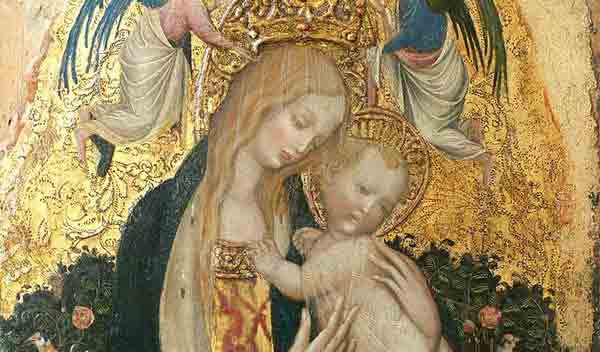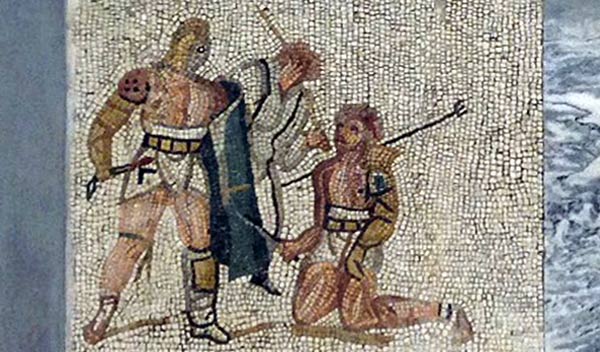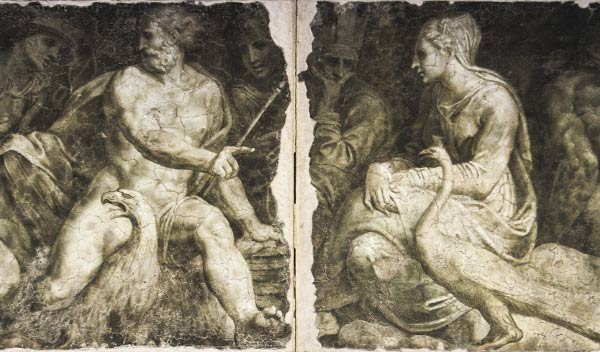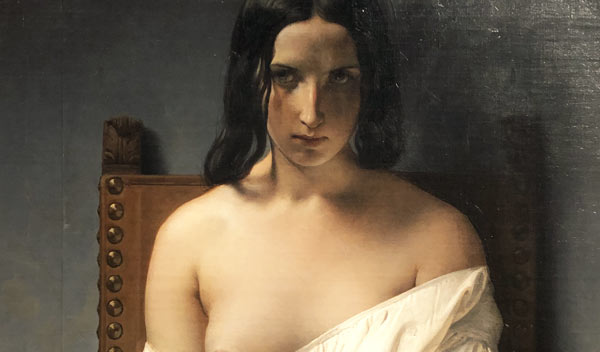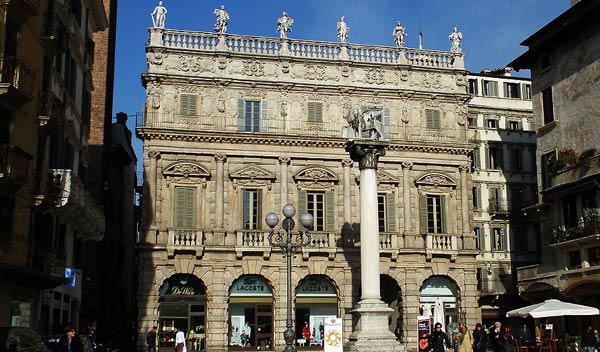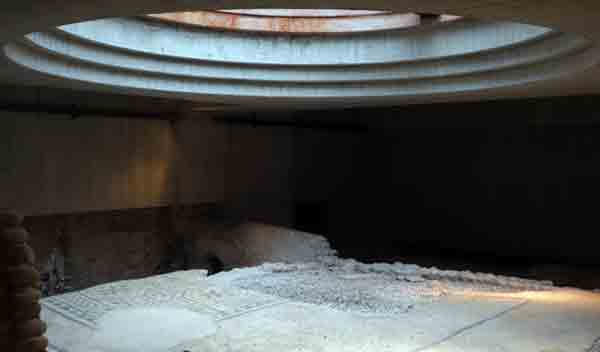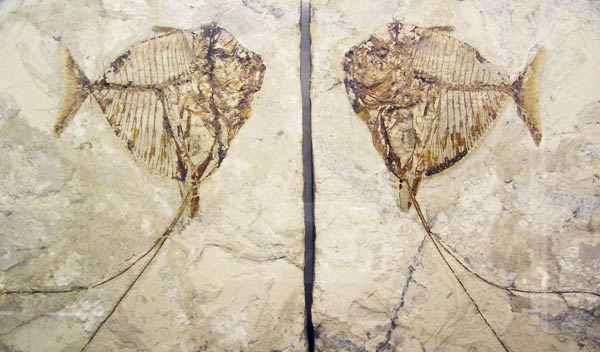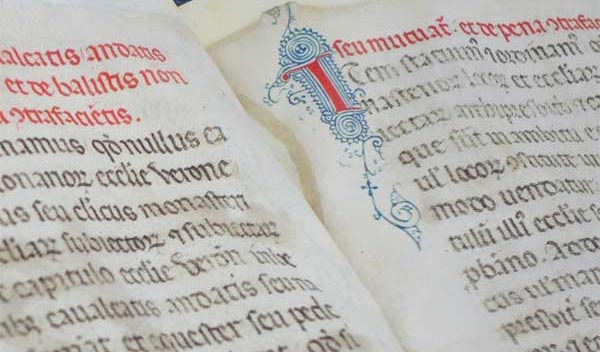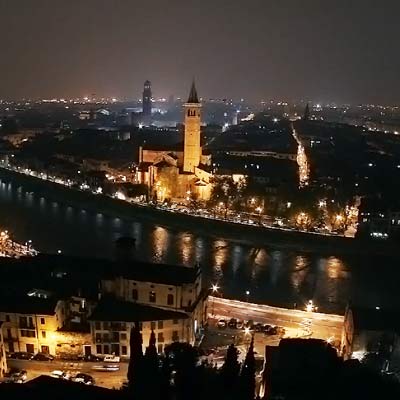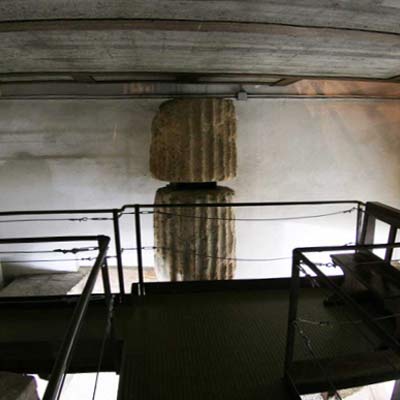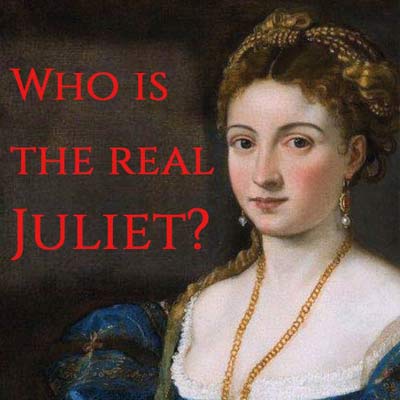The Fresco Museum
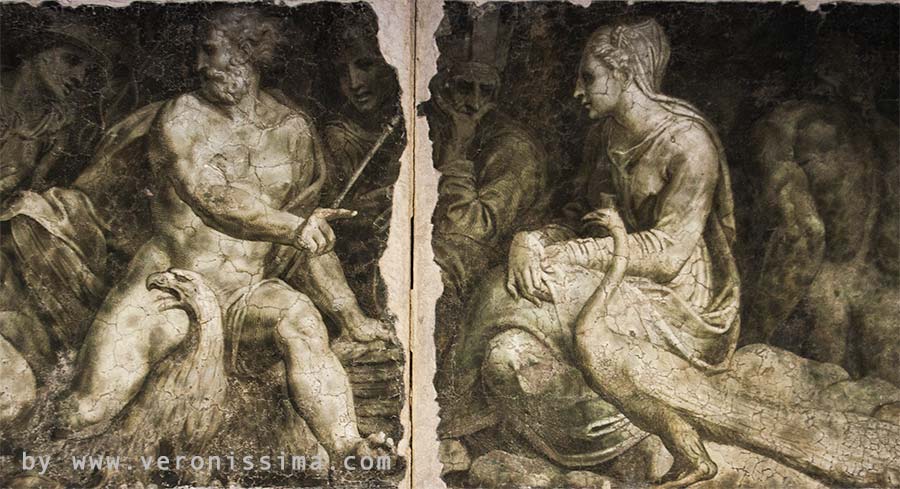
The G.B. Cavalcaselle Museum of Verona exhibits frescoes that have been removed from the facades of the city's buildings and churches. It is housed inside the ancient deconsecrated monastery of San Francesco al Corso. According to the tales of Romeo and Juliet, it is the place where Juliet was buried and where the epilogue of the Shakespearian tragedy takes place.
Oncoming Tours
Info & Guided Tours:
+39 333 2199 645 info@veronissima.com P.I. 03616420232 C.F. CPPMHL74L13L781C
It is a unique museum in its kind. In addition to the frescoes there are paintings, Renaissance bronzes, and some Roman amphorae left in the basement of the complex where they were found. The exhibition route also includes the crypt where you will find the stone sarcophagus which is traditionally considered to be the tomb of Juliet.
If you want to know more
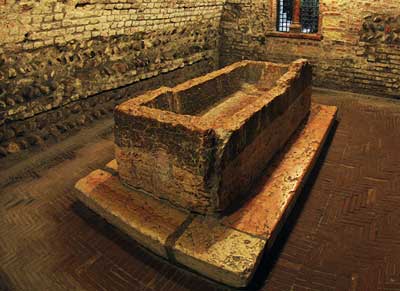
The legend of Romeo and Juliet and how the tomb of Shakespeare's heroine was discovered.
FIND OUTVerona Urbs Picta
In Verona in the 1500s and 1600s, it was fashionable to decorate the facades of buildings with frescoes. They could be allegorical mythological or religious scenes. Some had bright and brilliant colors, others were painted in monochrome to imitate sculptures and bas-reliefs. Strolling through the streets and squares you can still see many examples, more or less well preserved, for example in Piazza Erbe. There were so many frescoed facades that Verona was nicknamed urbs picta, or "painted city".
Detachment of wall paintings
Because the fresco is created directly on the wall, it cannot be moved in the same way as a painting on wood or canvas. If the wall on which it stands is damaged by moisture or collapse, the work is lost forever. This is why, back in ancient times, various techniques were developed to remove the painted surface from the wall and make it movable, just as if it were any other painting. The simplest way involves cutting and removing the piece of wall on which the fresco is located. In the more complex and sophisticated techniques, only the painted surface is removed. Several layers of canvas are glued to the wall and by pulling they remove the thin layer of plaster on which pigments are. The result of the tearing is then glued on a mobile frame and the canvases used to detach it are removed.
This technique was abundantly used between the end of the 19th and the beginning of the 20th century to save the splendid decorations of some important palaces and churches in Verona.
Palazzo Fiorio della Seta
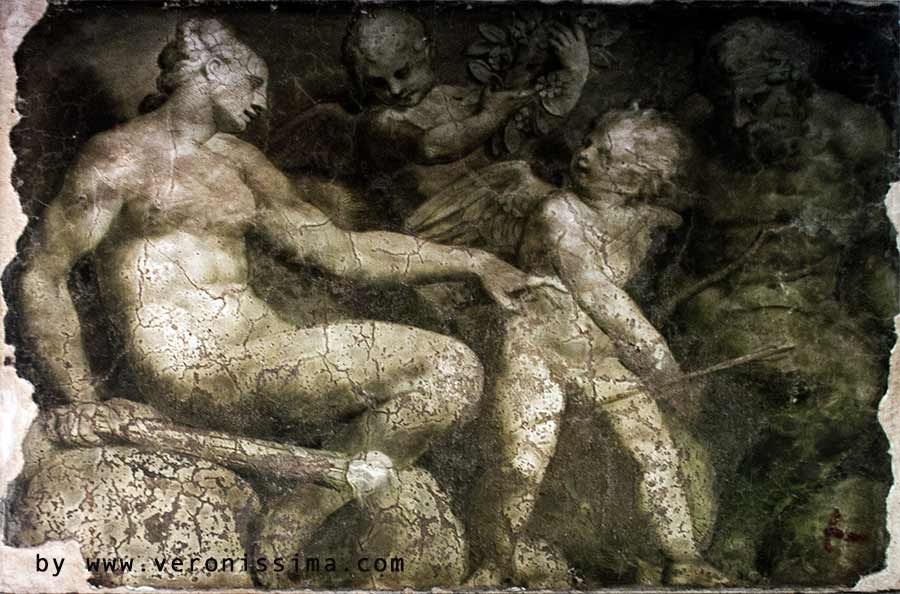
Among the works that constitute the core of the Cavalcaselle Museum in Verona are the frescoes from Palazzo Fiorio della Seta. It was one of the most spectacular buildings in Verona, built by a wealthy family of merchants on the banks of the Adige, in the area of the island that once existed in the middle of the river. It could be accessed by boats directly from the water, as was the case with Venetian palaces.
The facade was entirely covered with frescoes by Domenico Brusasorzi and Bernardino India, the greatest exponents of Veronese Mannerism.
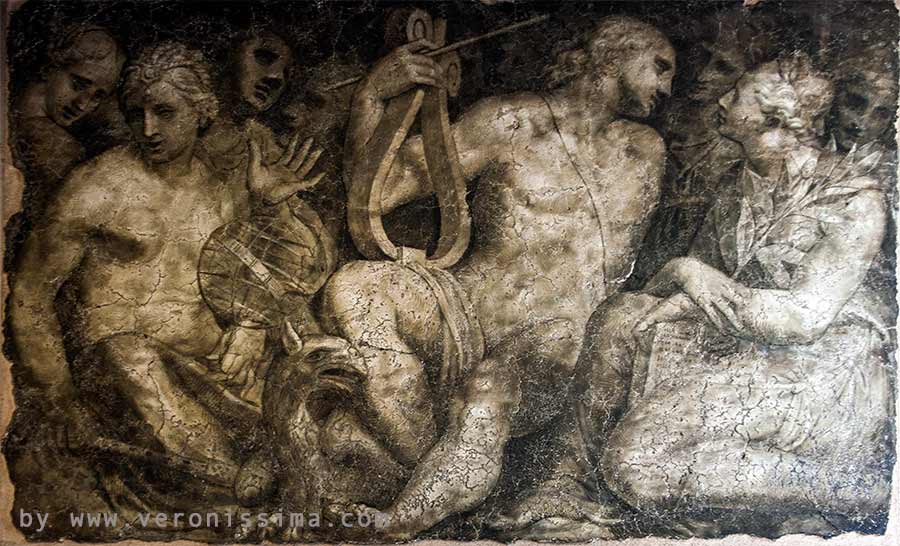
The paintings were in monochrome, in imitation of sculpted reliefs, and depicted mythological scenes.
In 1882, a devastating flood of the Adige River severely damaged the building, which was demolished to allow the construction of the embankments that would protect the city from future floods.
The precious works of art were removed from the building and are now on display in the Museum of Frescos, along with a model of Palazzo Fiorio della Seta and some period photographs showing how it looked.
Altichiero and Scala family building
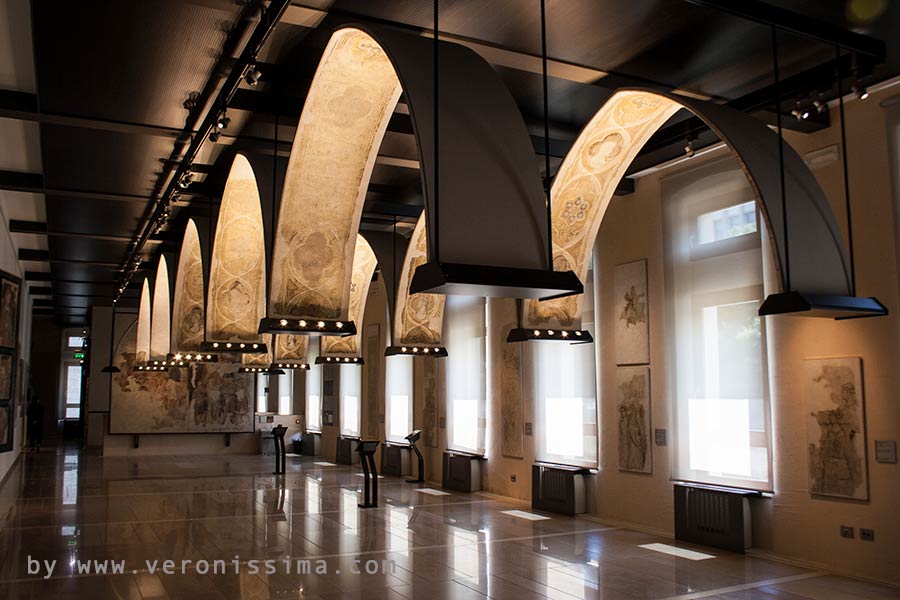
Another significant artwork in the Verona Fresco Museum are the paintings for the windows arches of the Scaligeri palace. It was the ancient residence of the middle age ruling family of Verona, one of the palaces that you will find in the beautiful Piazza dei Signori, in the very heart of Verona old town. In 1364 Cansignorio della Scala called the painter Altichiero to decorate the loggia of the palace. Altichiero, a Veronese painter, is considered to be one of the greatest exponents of the refined International Gothic style. In the surface under the pointed arches he created acycle of profiles of Roman emperors that served to celebrate the della Scala dynasty by associating it with the importance that Verona had had in Roman times.
The frescoes, detached in 1967, were mounted on a structure that reproduces the shape of the pointed arches of Cansignorio della Scala's palace.
The Muses Room
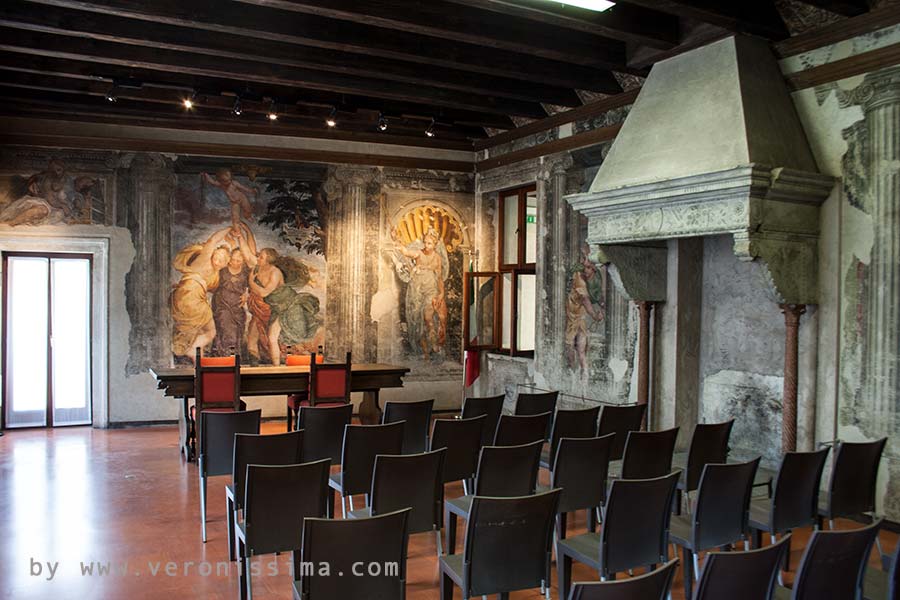
One of the rooms of the Cavalcaselle Museum in Verona is entirely decorated with the detached frescoes from the palace of the noble Guarienti family. The dimensions and layout of the room faithfully reproduce the original space where the paintings by Paolo Farinati, one of Verona's most important painters of the second half of the 16th century, were located. Painted architectures and openings blend with the real ones of doors and windows. Among them allegorical and mythological figures are placed.
Every Saturday morning, in this evocative room are celebrated the civil marriages of the City of Verona.
Other Artworks
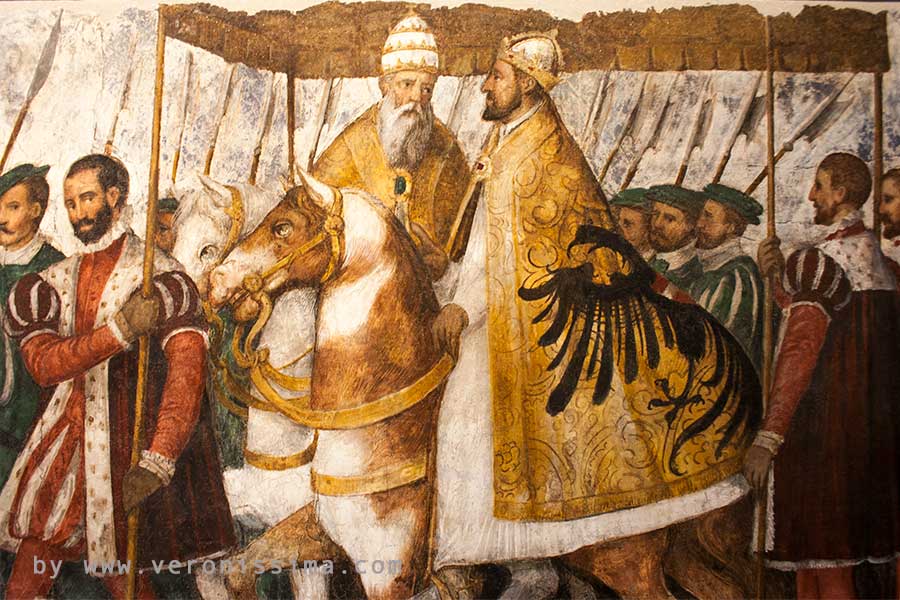
Other notable artworks include the large cycle depicting the ride of Charles V and Clement VII in Bologna, painted by Paolo and Jacopo Ligozzi. It decorated a large reception hall of the Fumanelli Palace in Verona.
There are also some big canvases painted by Felice Brusasorzi, Anselmo Canera and Paolo Farinati for palazzo Ridolfi with the stories of
Moses.
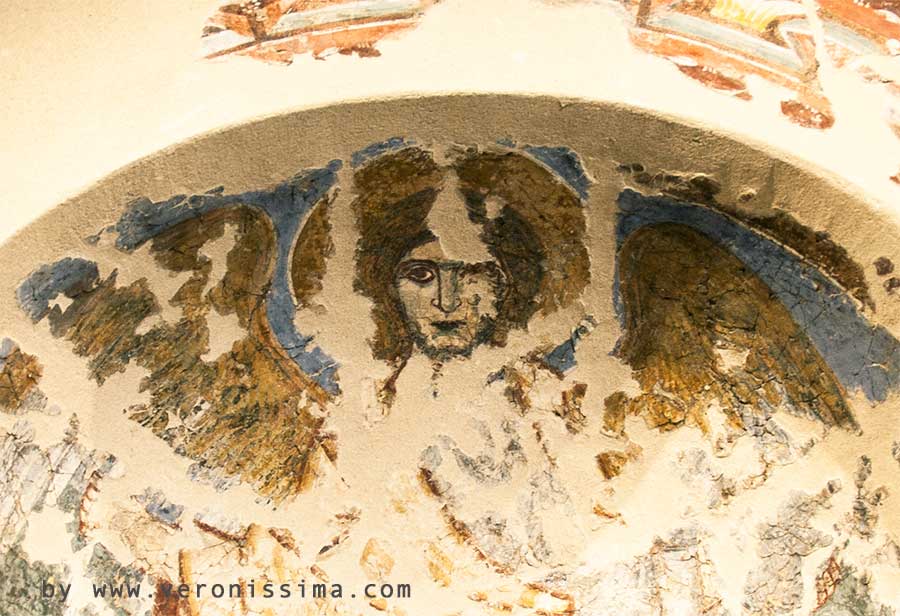
Another extraordinary testimony of Veronese mural painting is the cycle that decorated the inside of the cave of San Nazaro and Celso. This was an ancient early Christian place of worship, dug into the tufa of the Veronese hills outside the original Roman city. There are two layers of painting, one dating as far back as the tenth century, and clearly influenced by the Byzantine style, the other from the twelfth century.
San Franceso al Corso church
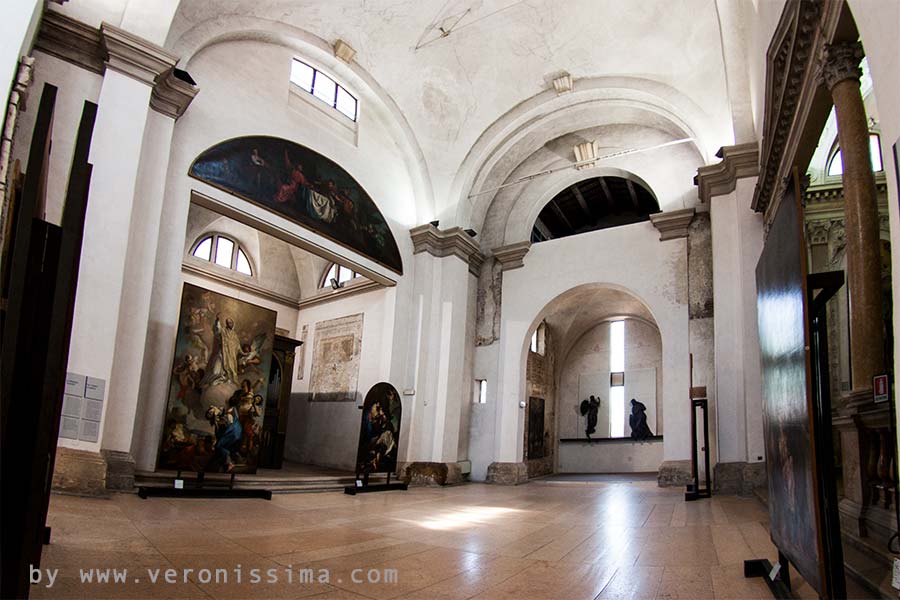
The deconsecrated church of San Francesco al Corso annexed to the monastery has been transformed into an art gallery. On display are some large canvases by Veronese painters between 1500 and 1600 and the bronze sculptures that decorated the Council Loggia in Piazza dei Signori.
Guided tours of Fresco Museum
The Museum of Frescoes in Verona is very interesting and certainly worth a visit even if it doesn't exhibit artwork by internationally famous artists. The collections are varied and unusual, with works of many genres, themes and origins, set up with original and innovative architectural solutions. The route through the ancient monastery is articulated, winding through the charming cloister, the outer courtyard, the old cells, the church and the underground crypt where there is the sarcophagus believed to be Juliet's tomb.
Ask a tour guide to take you on a tour through the works, their meanings, the techniques used to create them, and the history of the buildings from which they come.
The museum is equipped with an educational room, making it a suitable destination for students on a school trip. They will learn more about Renaissance painting and fresco technique.
Info & Bookings:
+39 333 2199 645 info@veronissima.com P.I. 03616420232 C.F. CPPMHL74L13L781C

 IT
IT 日本
日本 DE
DE FR
FR 中文
中文 ES
ES